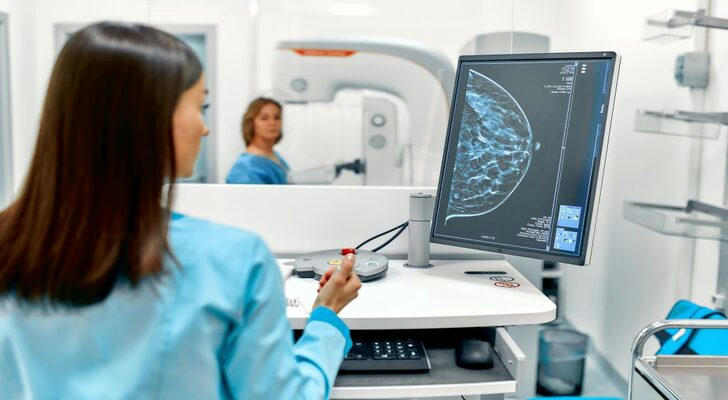Significant Efficacy in Breast Cancer Treatment: The Dual Advantages of Precision Therapy and Rapid Recovery
Breast cancer treatment is entering a new era, with precision therapyoffering new hope to patients due to its remarkable efficacy and minimal side effects. By leveraging advanced technologies such as genetic testing, targeted drugs, and immunotherapy, doctors can tailor the most effective treatment plans for each patient, significantly improving outcomes and shortening recovery times.

🌟 Current Status and Challenges in Breast Cancer Treatment
Breast cancer is one of the most common malignancies among women worldwide, with incidence rates rising annually. According to the World Health Organization (WHO), over 2 million new cases are diagnosed each year, accounting for more than 25% of all cancer cases. In developed countries, the incidence is particularly high, while in developing nations, mortality rates remain elevated due to insufficient screening and diagnostic resources.
🔗World Health Organization (WHO): Breast Cancer Statistics
Traditional treatments, including surgery, chemotherapy, and radiation, have limitations such as severe side effects, high recurrence rates, and prolonged treatment cycles. These challenges have driven the medical community to explore more effective and less toxic therapies, making precision therapy a focal point of modern oncology.
💡 Advantages of Precision Therapy
Precision therapy is a personalized approach based on the genetic and molecular characteristics of both the patient and the tumor. By identifying specific cancer drivers through genetic testing and molecular profiling, doctors can design targeted treatments that maximize efficacy while minimizing harm to healthy cells.
Remarkable Efficacy: Targeted therapies like Herceptin for HER2-positive breast cancer and PARP inhibitors for BRCA-mutated patients have shown significant improvements in survival rates and tumor control.
Minimal Side Effects: Unlike traditional chemotherapy, precision therapies selectively attack cancer cells, reducing common side effects such as hair loss, fatigue, and nausea. This enhances patients' quality of life during treatment.

🚀 How Precision Therapy Promotes Rapid Recovery
Precision therapy not only improves treatment outcomes but also accelerates recovery through several mechanisms:
Personalized Treatment Plans: Tailored therapies based on genetic profiles ensure optimal efficacy, reducing unnecessary treatments and shortening recovery times.
Reduced Complications: By minimizing damage to healthy tissues, precision therapy lowers the risk of infections and other complications, enabling faster recovery.
Psychological and Physical Support: The reduced side effects and improved outcomes boost patients' confidence and mental well-being, further aiding recovery.
📊 Success Stories and Data Support
Clinical trials and real-world cases highlight the transformative impact of precision therapy:
- Clinical Data: Studies published in Nature Medicine (2022) show that HER2-positive patients treated with Herceptin experienced a 50% improvement in 5-year disease-free survival rates. Similarly, PARP inhibitors like Olaparib have doubled progression-free survival in BRCA-mutated patients.
🔗Nature Medicine (2022): CAR-T Therapy in Breast Cancer
- Patient Stories:
Case 1: HER2-Positive Breast Cancer Patient
Background: A 45-year-old woman, Emily Johnson, was diagnosed with HER2-positive breast cancer, with the tumor having spread to her lymph nodes.
Treatment Plan: Based on her genetic test results, her doctor prescribed a precision treatment plan combining Herceptin (trastuzumab) with chemotherapy.
Treatment Outcome: After six months of treatment, Emily’s tumor completely disappeared, and she experienced no severe side effects.
Recovery: Emily recovered quickly and has since returned to her normal work and daily life. Regular follow-ups show no signs of recurrence.
Case 2: BRCA-Mutated Breast Cancer Patient
Background: A 38-year-old woman, Sarah Thompson, carrying a BRCA1 gene mutation, was diagnosed with triple-negative breast cancer.
Treatment Plan: Her doctor chose a PARP inhibitor, Olaparib, as the primary treatment.
Treatment Outcome: After three months of treatment, Sarah’s tumor significantly shrank, and she avoided the harsh side effects typically associated with traditional chemotherapy.
Recovery: Sarah now only requires regular oral medication, and her quality of life has improved dramatically. She has reintegrated into her family and social life.

🌈 Future Prospects
The future of breast cancer treatment lies in further advancements in precision therapy and comprehensive recovery programs. Emerging technologies like CAR-T cell therapy, which has shown promise in early trials for HER2-positive breast cancer, could revolutionize treatment paradigms. Additionally, integrating precision therapy with rehabilitation care, as seen in MD Anderson Cancer Center's "Precision Recovery Program," can enhance recovery and reduce recurrence rates.
🔗MD Anderson Cancer Center: Precision Recovery Program
🎯 Conclusion
Precision therapy offers dual advantages in breast cancer treatment: remarkable efficacy and rapid recovery. By minimizing side effects and tailoring treatments to individual patients, it represents a significant leap forward in oncology. With ongoing advancements in technologies like CAR-T therapy and AI-driven rehabilitation, the future of breast cancer treatment promises higher precision, lower recurrence, and renewed hope for patients worldwide.
